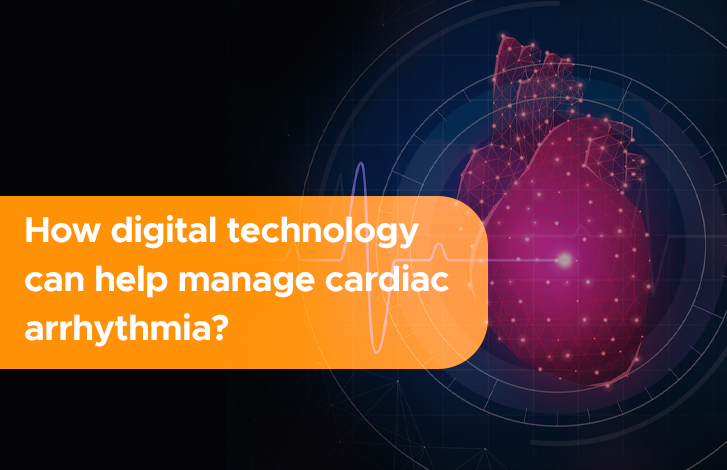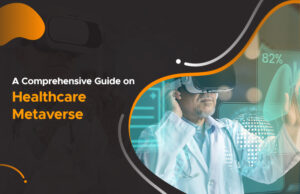In recent years, digital technology has revolutionized the way we approach healthcare. From wearable devices that track our daily activity levels to telemedicine services that allow us to consult with doctors remotely, technology is helping to improve every aspect of our well-being. One area where digital technology has made considerable progress is cardiac arrhythmia management. Thanks to a growing range of digital tools and techniques, providers and patients can better track, diagnose, and manage this potentially life-threatening condition.
An Overview of Cardiac Arrythmia
Millions of people around the world are affected by cardiac arrhythmias, making it a widespread issue. Various factors, including heart disease, high blood pressure, and diabetes, can cause them. Arrhythmias can cause several symptoms, including chest pain, shortness of breath, and dizziness. In some cases, arrhythmias can be fatal.
According to Verywell Health, atrial fibrillation is the most common type of sustained arrhythmia in the United States, affecting an estimated 2% to 9% of the population. This number is forecast to climb in the future. One study found that ventricular arrhythmias occurred at a rate of 48 per 100,000 adults (or roughly 1 in 2,100 people). Among older adults without known risk factors, ventricular arrhythmias occur in 2-3 out of every 100 individuals, while among those with Coronary Artery Disease (CAD), the rate is 15-16 out of every 100.
Digital technology improves the diagnosis, treatment, and prevention of cardiac arrhythmias. Some of the digital technologies that are being used include:
Wearable Devices
Wearable devices like smartwatches and fitness trackers can monitor heart rate and rhythm. This can help to identify arrhythmias early on before they cause any symptoms. In some cases, wearable devices, such as defibrillation, can even deliver therapy.
Cardiologist Dr. John Smith says digital technology is transforming how cardiac arrhythmias are diagnosed and treated. Wearable devices, remote monitoring, and artificial intelligence are all being employed to enhance the care of patients with these conditions.
According to a comment in The Lancet, novel and user-friendly wearables can identify arrhythmias. Wearable ECG technology using automated photoplethysmography algorithms has shown feasible and accurate cardiac rhythm detection. This can aid in monitoring the dynamic burden of time spent in atrial fibrillation.
These devices are becoming increasingly popular among consumers. A fifth of adults in the USA now use a wearable device. As technology advances, we’ll likely see even more innovative ways that wearable devices can be used to improve our health and well-being.
Remote Monitoring
Remote monitoring allows healthcare providers to track patients with arrhythmias from a distance. This can help to identify and manage arrhythmias more effectively. It can also reduce the need for in-person visits. Remote monitoring devices for detecting cardiac arrhythmias, such as Holter monitors and implantable loop recorders, are widely used. However, these devices are often cumbersome or require an invasive implant procedure. Newer single-lead electrocardiogram (ECG) monitors, such as the ZioPatch (iRhythm Technologies), and compact personal ECG devices, such as Kardia Mobile (AliveCor), have increasingly been adopted by electrophysiologists to detect paroxysmal rhythms.
Remote monitoring can also be used to identify patients who are at risk for developing arrhythmias. For example, a study published in the journal “Circulation” found that remote monitoring can be used to identify patients with sleep apnea who are at risk for developing AF. The study found that patients with sleep apnea who were monitored remotely were more likely to be diagnosed with AF than those who were not monitored remotely.
Artificial Intelligence
For decades, the field of cardiac electrophysiology (EP) has utilized basic artificial intelligence (AI) methodologies. The recent resurgence of interest in deep learning techniques has led to new developments in electrocardiography analysis. For example, the identification of disease signatures. The rapid growth of AI-aided applications and big data research has been facilitated by advances in AI. Along with the simultaneous expansion of computational power, sensor technology, and the availability of web-based platforms.
The expansion of the Internet of Things and advancements in telecommunication technology have created new opportunities for detecting atrial fibrillation. Advances in 3D cardiac imaging aided by AI have led to the development of virtual hearts and the ability to simulate cardiac arrhythmias. Robotics, non-invasive ablation therapy, and extended realities hold great potential for revolutionizing the future of EP.
AI has a significant impact on all aspects of patient management in cardiac EP, from the identification of arrhythmia to therapy (both invasive and non-invasive). Computerized interpretation of electrocardiography and rule-based algorithms for cardiac devices are examples of simple AI techniques that have been established.
Conclusion
The management of cardiac arrhythmias is being transformed by digital technology. Wearable devices, remote monitoring, and artificial intelligence are all being employed to enhance the diagnosis, treatment, and prevention of these conditions. As digital technology continues to evolve, we can anticipate the emergence of even more innovative methods. Including those pertaining to the utilization of technology to improve the management of cardiac arrhythmias.
By leveraging these technologies, we have the potential to revolutionize the way we manage cardiac arrhythmias. By improving the diagnosis, treatment, and prevention of these conditions we can enhance the quality of life for patients with arrhythmias.







